Netgear R6100 Wi-Fi Router Review – 802.11AC Wireless For Under $100
Netgear R6100 – Wireless Speed & Performance
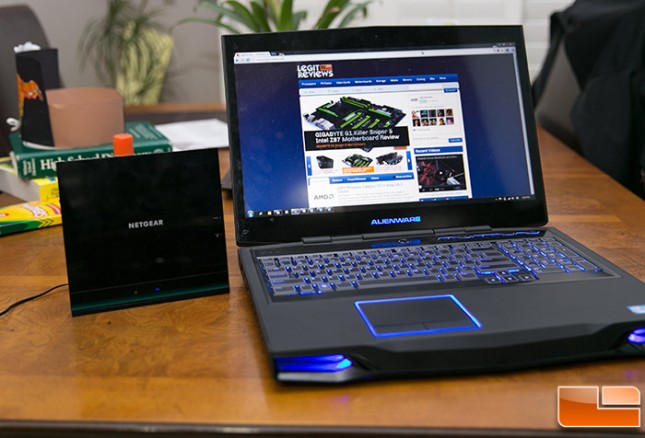
We were very interested to see the real-world wireless speed performance of the Netgear R6100 so we approached our speed tests like we have done in the past. We connected the Netgear R6100 to a PC running Windows 8 Pro 64-bit and configured the router using Automatic settings for both 2.4Ghz and 5Ghz bands. We took our Alienware M17XR4 to use as a target laptop client. The Alienware has served us well in the past as a machine is certainly a workhorse that doesnt skimp on features. The Alienware M17XR4 contains an Intel i7-3610QM CPU with 6GB RAM running Windows 7 64-Bit, and a NVIDIA GeForce GTX 660M video card. More importantly for our tests, the M17XR4 is outfitted with a Qualcomm Antheros Killer Wireless-N 1103 Network Adapter. The Killer 1103 is a three-antenna network adapter that connects at up to 450Mbps over 802.11n and features reduced power consumption and Wi-Fi Direct. Much has been written about the Killer NIC technology in recent years but there is no doubt that this 3-antenna solution will give us the best possible wireless throughput for our test. Many people dont have an 802.11ac device in their arsenal yet, so we are looking at some of the best speeds this router can do without the use of Wireless-AC.
We repeated the test 2 more times rotating the router 90 degrees after each test to make sure that the routers speed was affected adversely by its orientation.
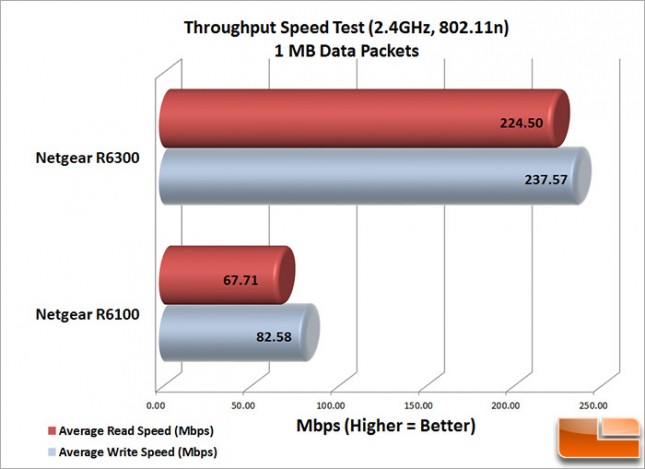 Benchmark Results: Well, this may not look correct, but it is. What you are seeing here is direct result of the LAN and WAN ports being limited to 10/100 Mbps speeds in the Netgear R6100. Because of this limitation, you will see that the R6100 reaches a plateau or maximum speed and will go no higher. Meanwhile, our flagship router, the Netgear R6300 is chugging along. Even though we are using 802.11n and the 2.4GHz channel, the Killer NIC does a great job in throughput delivering speeds from the R6300 that easily double that of baby brother R6100. Unfortunately, the anemic speeds that we see here manifest themselves throughout our tests.
Benchmark Results: Well, this may not look correct, but it is. What you are seeing here is direct result of the LAN and WAN ports being limited to 10/100 Mbps speeds in the Netgear R6100. Because of this limitation, you will see that the R6100 reaches a plateau or maximum speed and will go no higher. Meanwhile, our flagship router, the Netgear R6300 is chugging along. Even though we are using 802.11n and the 2.4GHz channel, the Killer NIC does a great job in throughput delivering speeds from the R6300 that easily double that of baby brother R6100. Unfortunately, the anemic speeds that we see here manifest themselves throughout our tests.
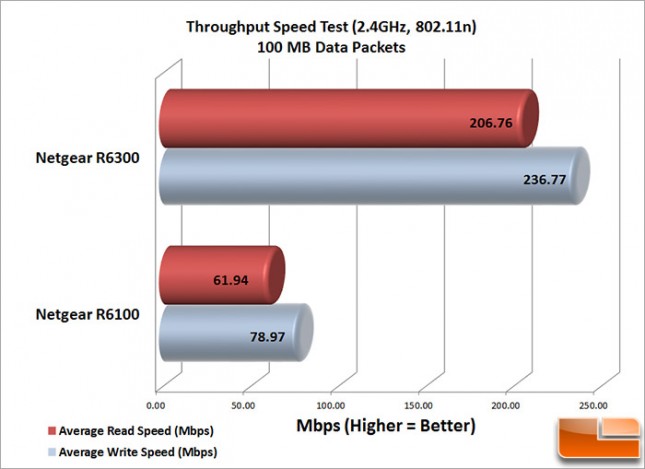 Benchmark Results: The reason we look at 100 megabyte data sizes is that this simulates what we would see when we stream multimedia content. Since we are looking to see how these routers perform in the real world, we use this size to give us a more consistent measurement of wireless speed. Here we see, the Netgear R6300 dominating the R6100 with speeds 3-times faster than the sub-$100 brother.
Benchmark Results: The reason we look at 100 megabyte data sizes is that this simulates what we would see when we stream multimedia content. Since we are looking to see how these routers perform in the real world, we use this size to give us a more consistent measurement of wireless speed. Here we see, the Netgear R6300 dominating the R6100 with speeds 3-times faster than the sub-$100 brother.
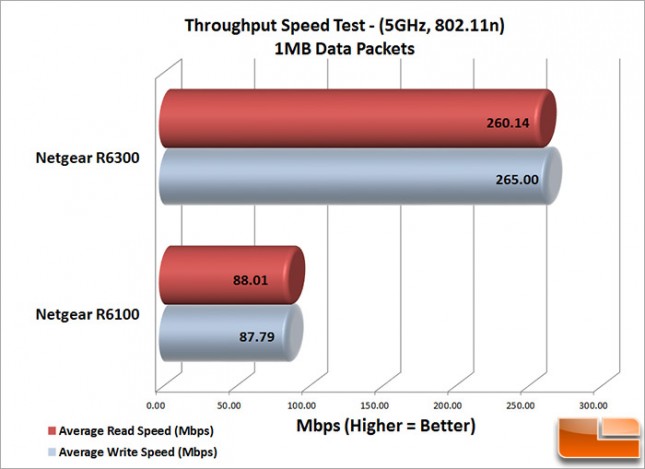 Benchmark Results: Using the more modern 5GHz channel yields similar results with the Netgear R6100 Average Read Speeds down around 88 Mbps while the R6300 shows a 195% improvement. Obviously, we are seeing a dramatic limitation due to the 10/100 speed WAN and LAN ports.
Benchmark Results: Using the more modern 5GHz channel yields similar results with the Netgear R6100 Average Read Speeds down around 88 Mbps while the R6300 shows a 195% improvement. Obviously, we are seeing a dramatic limitation due to the 10/100 speed WAN and LAN ports.
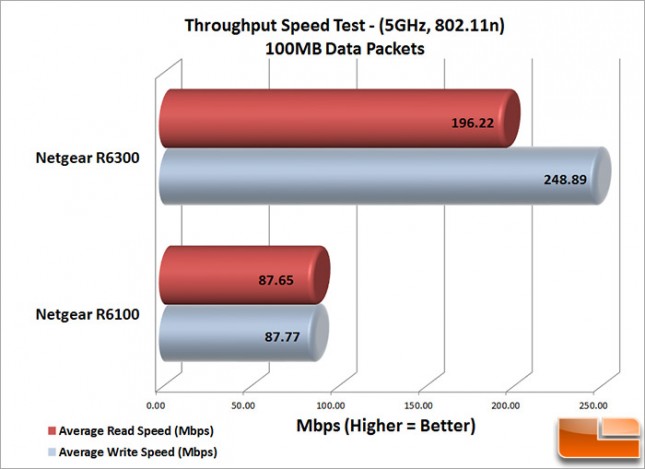 Benchmark Results: When looking at the 100 megabyte data packets, what is apparent is that the plateau for the R6100 Read/Write speeds are fairly consistent. Unfortunately for the R6100, these speeds are consistently slow.
Benchmark Results: When looking at the 100 megabyte data packets, what is apparent is that the plateau for the R6100 Read/Write speeds are fairly consistent. Unfortunately for the R6100, these speeds are consistently slow.
